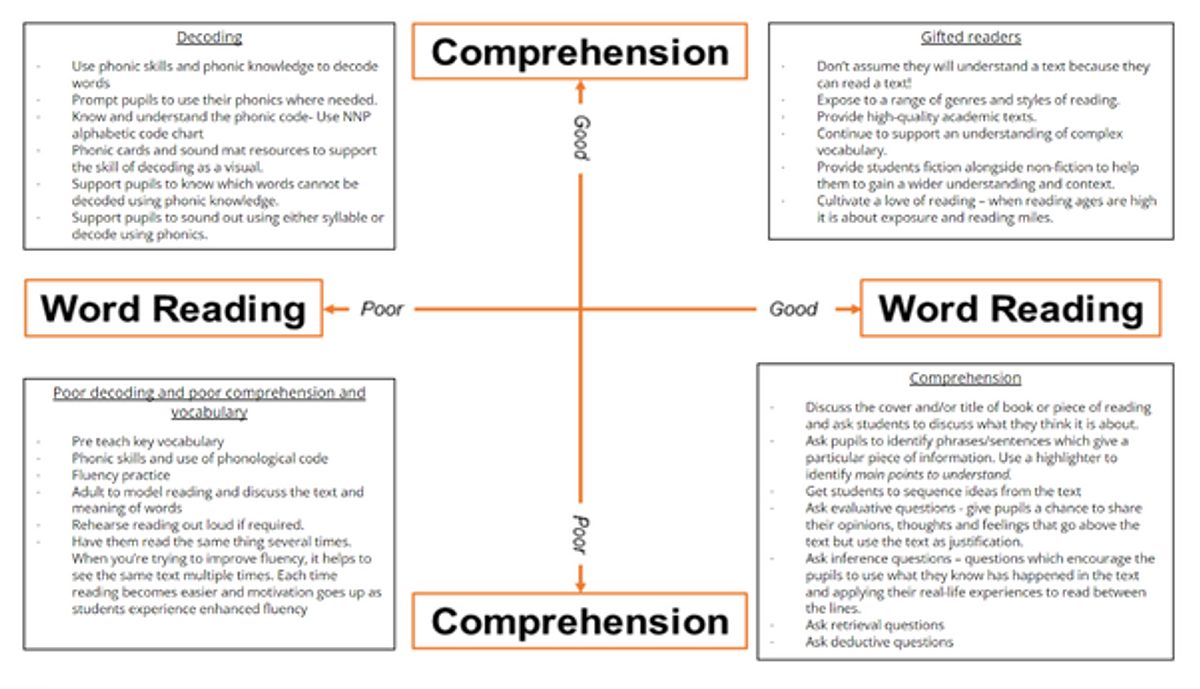
Blog -
Using evidence in education: A reflection
by Kate Mouncey – Director
Sandringham Research School is no longer active. We are continuing to support schools in the region through the wider Research School Network.
Search for other Research Schools in your area
Share on:

by Sandringham Research School
on the
Annabel Brown
We know that the ability to read is an essential life skill used throughout our years in school and in the workplace. Poor readers struggle to read independently and therefore read less: consequently, these students do not pick up vocabulary as quickly and those also from disadvantaged backgrounds can potentially start school having heard or seen 30 million fewer words than other children their age (Hart and Risley, 2003). This obviously then makes school challenging place to be, leading to poor examination grades and reduced life chances. The EEF report the lifelong consequences of poor language development:
This year Sandringham Research School have been working collaboratively in various partnerships to support students’ literacy and one of our projects led us to dive deeply into the KS2 and KS3 EEF guidance on reading, to examine which reading strategies most support our learners in accessing the ever-increasing demands of the curriculum and to allow them to go on to have better life chances.
Our analysis led us to examine five key challenges when tackling reading in schools:
Ofsted reported in their recent Secondary publication ‘Now the whole school is reading’, that in schools with the most effective reading strategies:
But what can teachers do in the classroom to directly support our students reading abilities?
EEF guidance breaks down reading into two strands, ‘Word reading’ and ‘Language comprehension’. It’s well worth watching their short video about the reading house to familiarise yourself with the building blocks that support reading comprehension as illustrated below.

At Sandringham we have a whole-school priority of reading, and our most recent Inset day focused on how we can support our students to improve their reading in all subjects.
1. Assess the reading ability of our students
With careful consideration and assessment, we can identify how good our students are at word reading and reading comprehension and we can begin to categorise students into the quadrants below to offer personalised support for all abilities of readers.

2. Activate students’ prior knowledge
Support students to access the text you are approaching by activating their prior knowledge. Delve into vocabulary that they have seen before in lessons that will make the writing more accessible to them. Ask questions that will remind students of the knowledge they already have:
3. Clarify students understanding of texts
It is very easy as a teacher to think that reading a text once will consolidate our students’ understanding, especially in the time constrains we have to cover the curriculum. The research shows that clarifying students’ comprehension after reading through re-reading, questioning and annotating will help to transfer the knowledge into their long-term memory. The EEF suggest that teachers:
4. Summarise the texts
Summarising a text succinctly supports pupils to focus on key content in the text. This supports teachers with comprehension monitoring. Tools like WordSift.org can help teachers to identify the key vocabulary used in their texts and use Word Clouds and other visual representations of texts to support students’ summaries. The EEF recommend that teachers can suggest the following:
5. Use guided reading strategies in lessons
Finally, supporting our students by modelling great reading, in-turn helps improve our students’ reading ability. I have outlined 5 strategies below and there are more to be found in the EEF guidance.
Details about the benefits of these reading strategies can be found on this poster Closing the Gap: Useful Reading Approaches from Alex Quigley’s website.
You can find out more about supporting students reading and literacy development in the EEF’s Improving Literacy at KS2 and Improving Secondary Literacy Guidance Reports.

Blog -
by Kate Mouncey – Director

Blog -
working with groups of schools

Blog -
5 musings on early reading and writing
This website collects a number of cookies from its users for improving your overall experience of the site.Read more